Manage Clusters on UI Console
This docs requires you to have velaux installed.
Manage Clusters
Currently, VelaUX support manage two kinds of clusters:
- Support connecting the exist kubernetes cluster.
- Support connecting the Alibaba ACK cluster.
Users with cluster management permissions can enter the cluster management page to add or detach managed clusters.
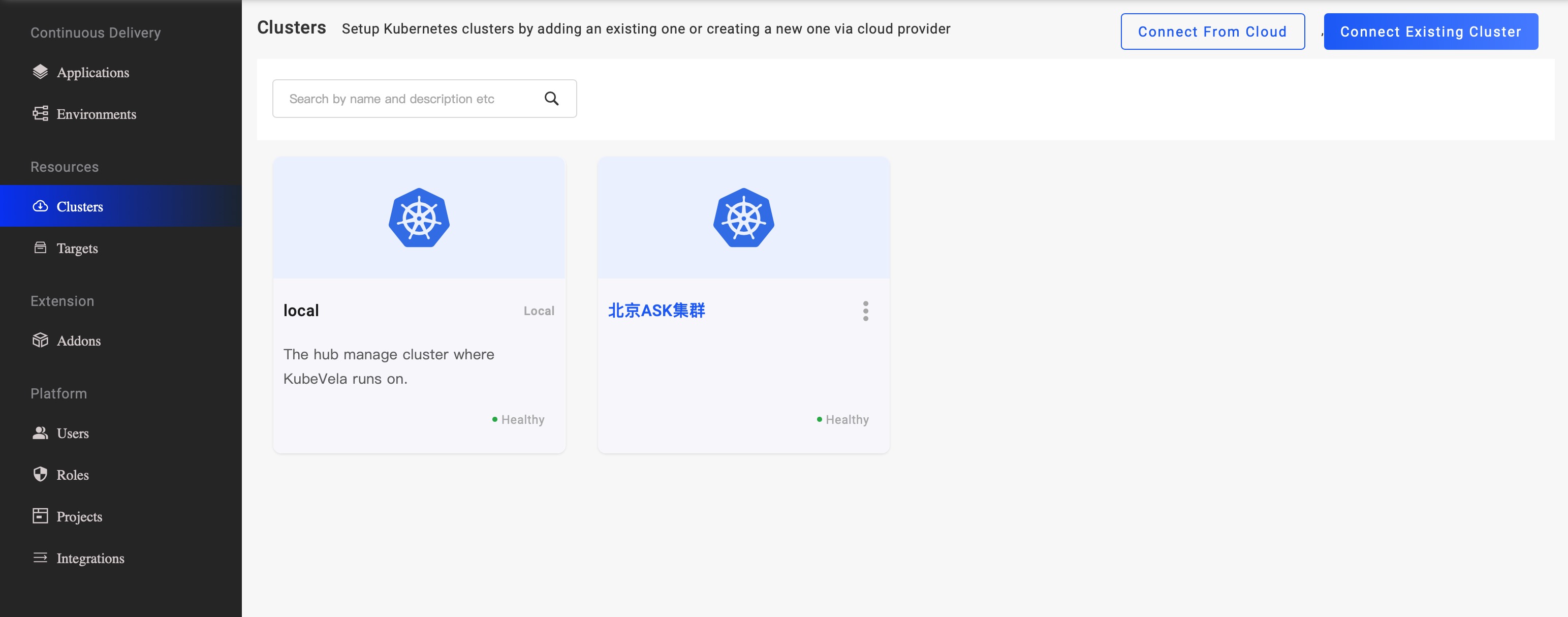
For connecting the ACK clusters, the platform will save some cloud info, Region, VPC, Dashboard Address, etc. When users use the cluster to create a Target, the cloud information is automatically assigned to the Target, which the cloud service applications can use.
Manage Delivery Target
To deploy application components into different places, VelaUX provides a new concept Delivery Target for user to manage their deploy destinations not only clusters or namespaces, but also cloud provider information such as region, vpc and so on.
Cluster
First, before configuring Target, you need to ensure your clusters have been joined. You can check your clusters in the Cluster page. The local cluster represents the cluster that KubeVela control plane is running on. If you have other clusters, you can either connect those clusters directly to KubeVela by providing their KubeConfig, or join clusters from your cloud provider such as Alibaba Cloud.
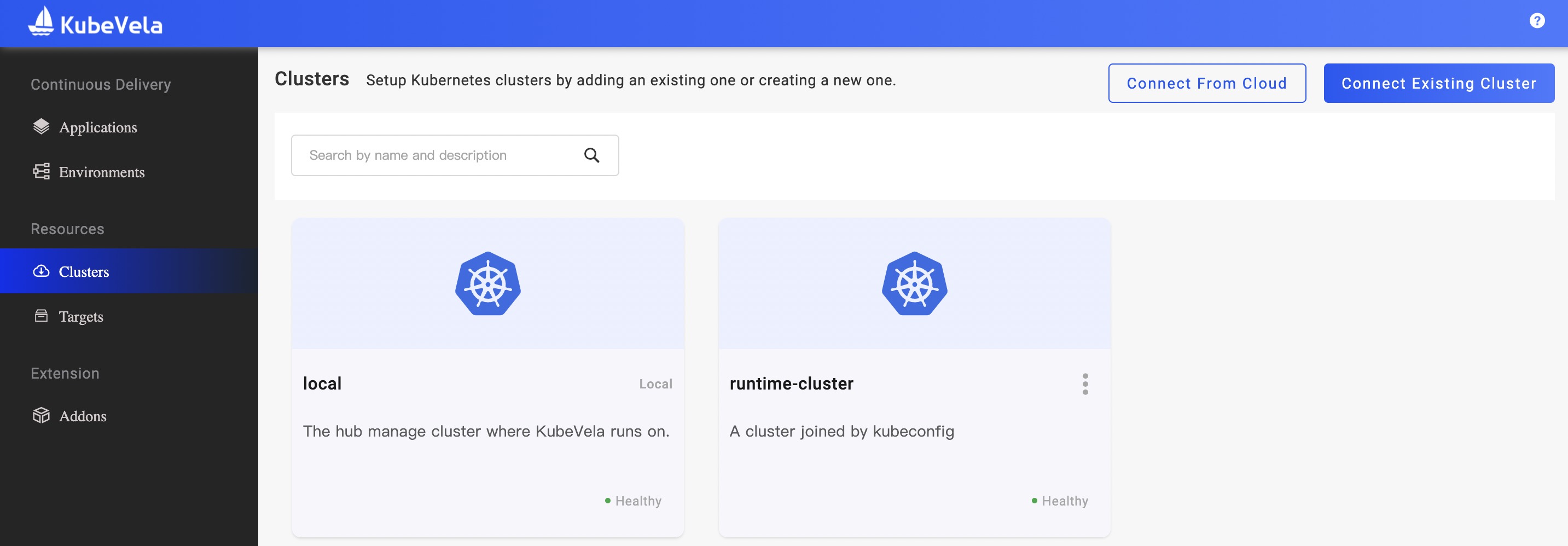
After adding clusters in KubeVela, you can edit their descriptions or disconnect them when there is no Application running on them.
Create Target
Now you can creating Target for deploying your applications. A target identifies a specific namespace in one cluster. If the namespace does not exist in the cluster, you can also create the namespace by clicking the New button.
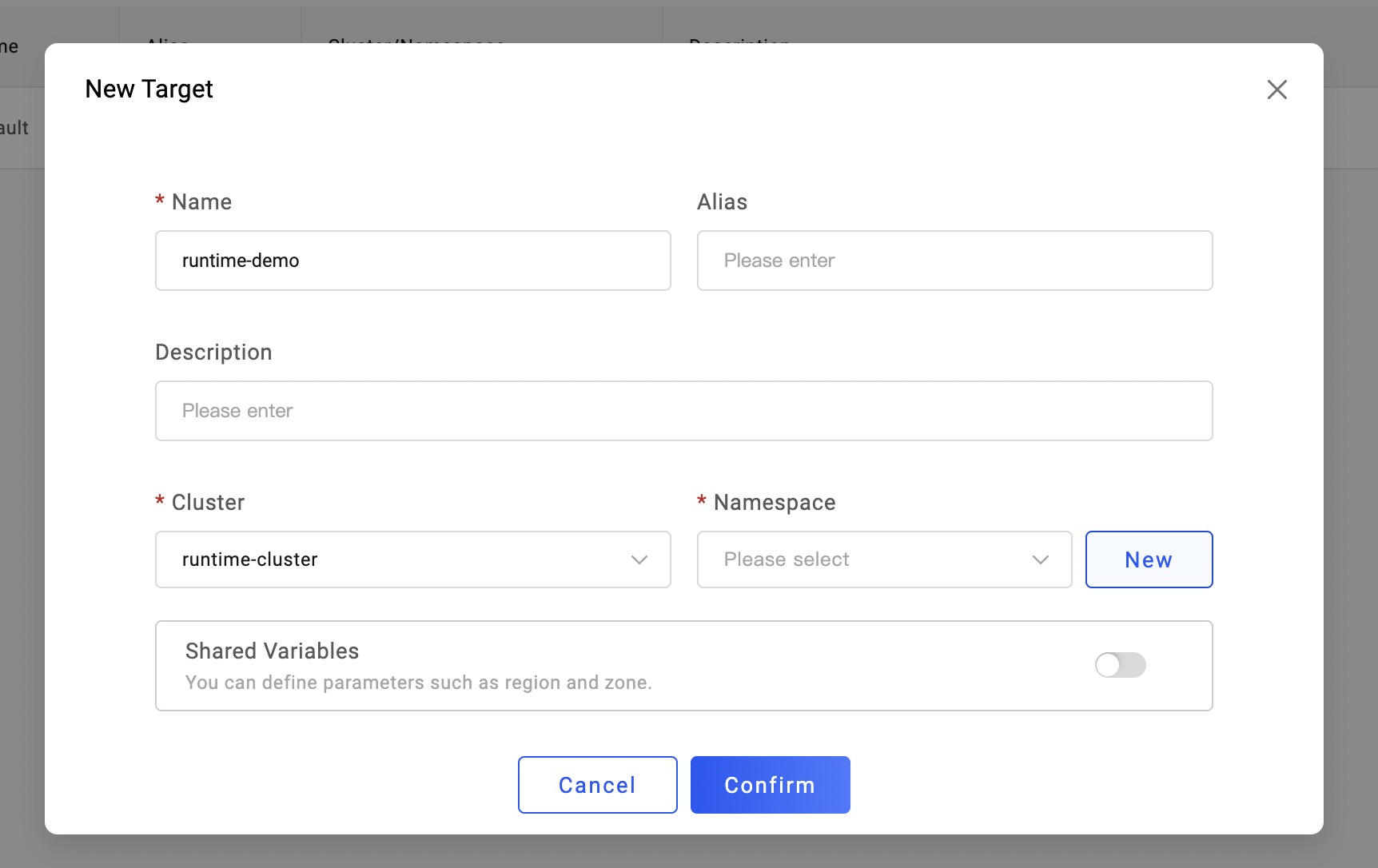
If you want to use the cloud resource (such as RDS from alibaba cloud), you can also set the Shared Variables and fill the provider name and region name in it. Make sure you have related terraform addon installed already.
Bind Targets in Environment
Go to Environment page and now you can bind your created targets in a environment.
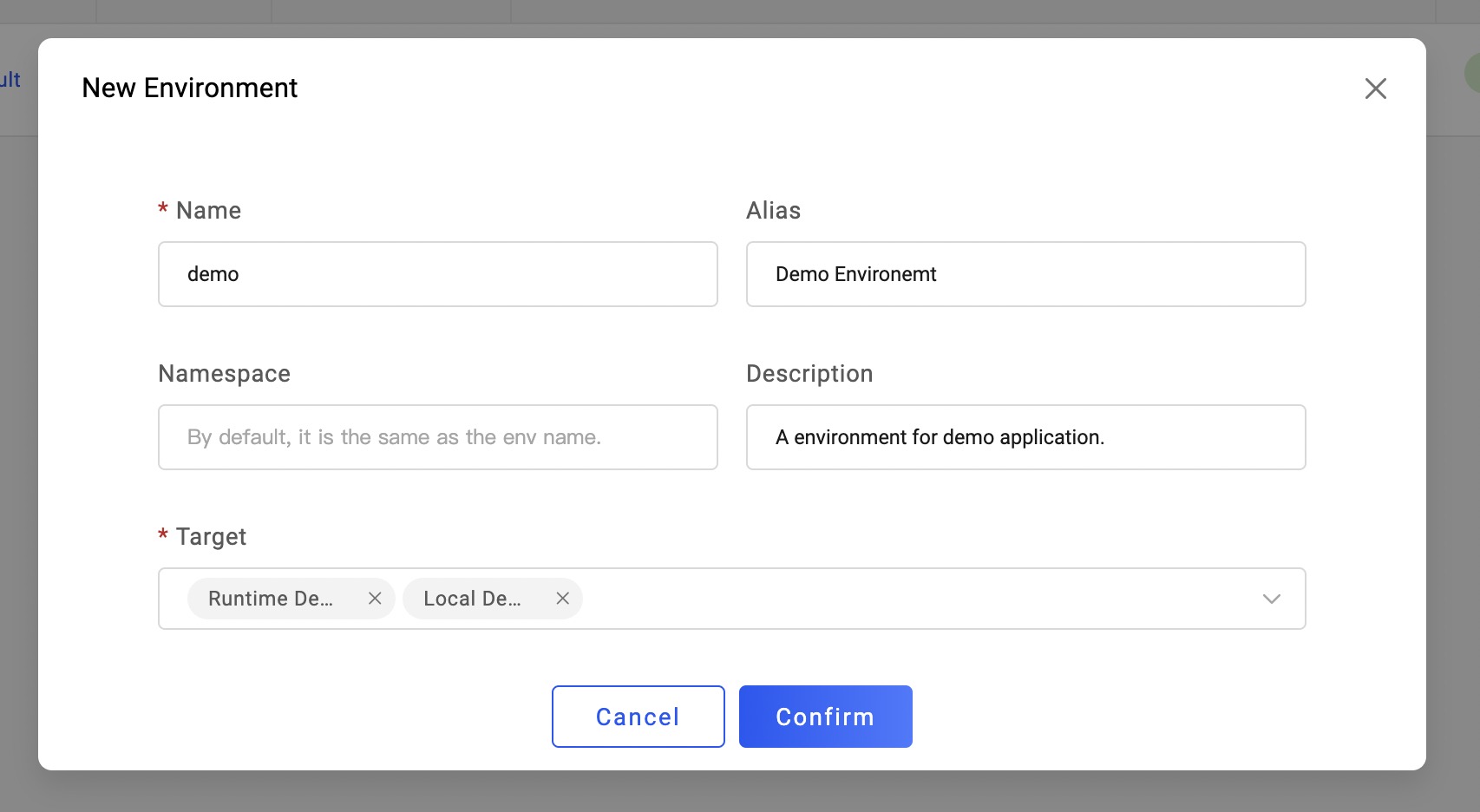
Create Application with Environment
Now you can use the environent which was bound to the targets just created.
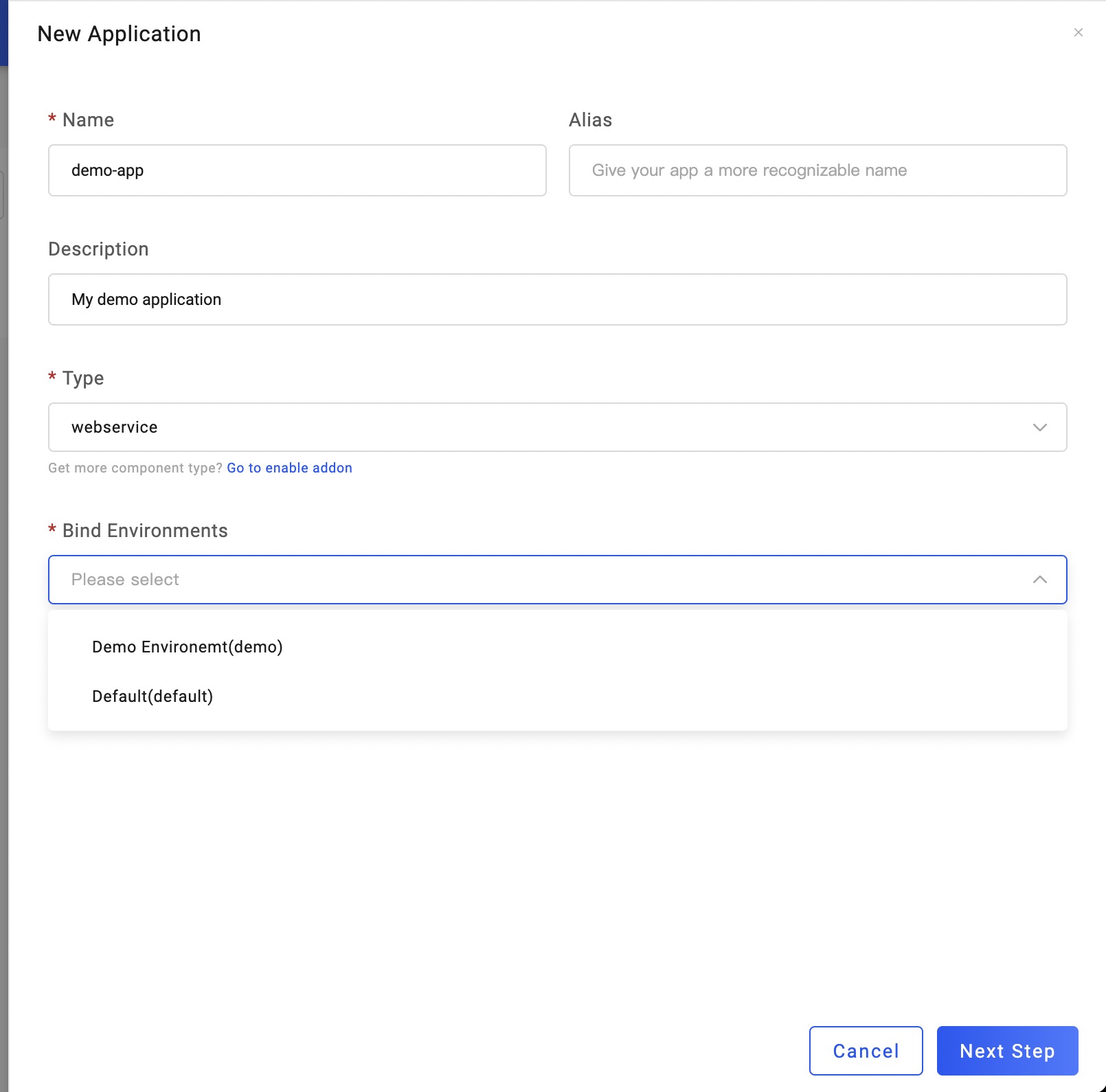
In the newly created application, you will see two targets contained in the workflow.
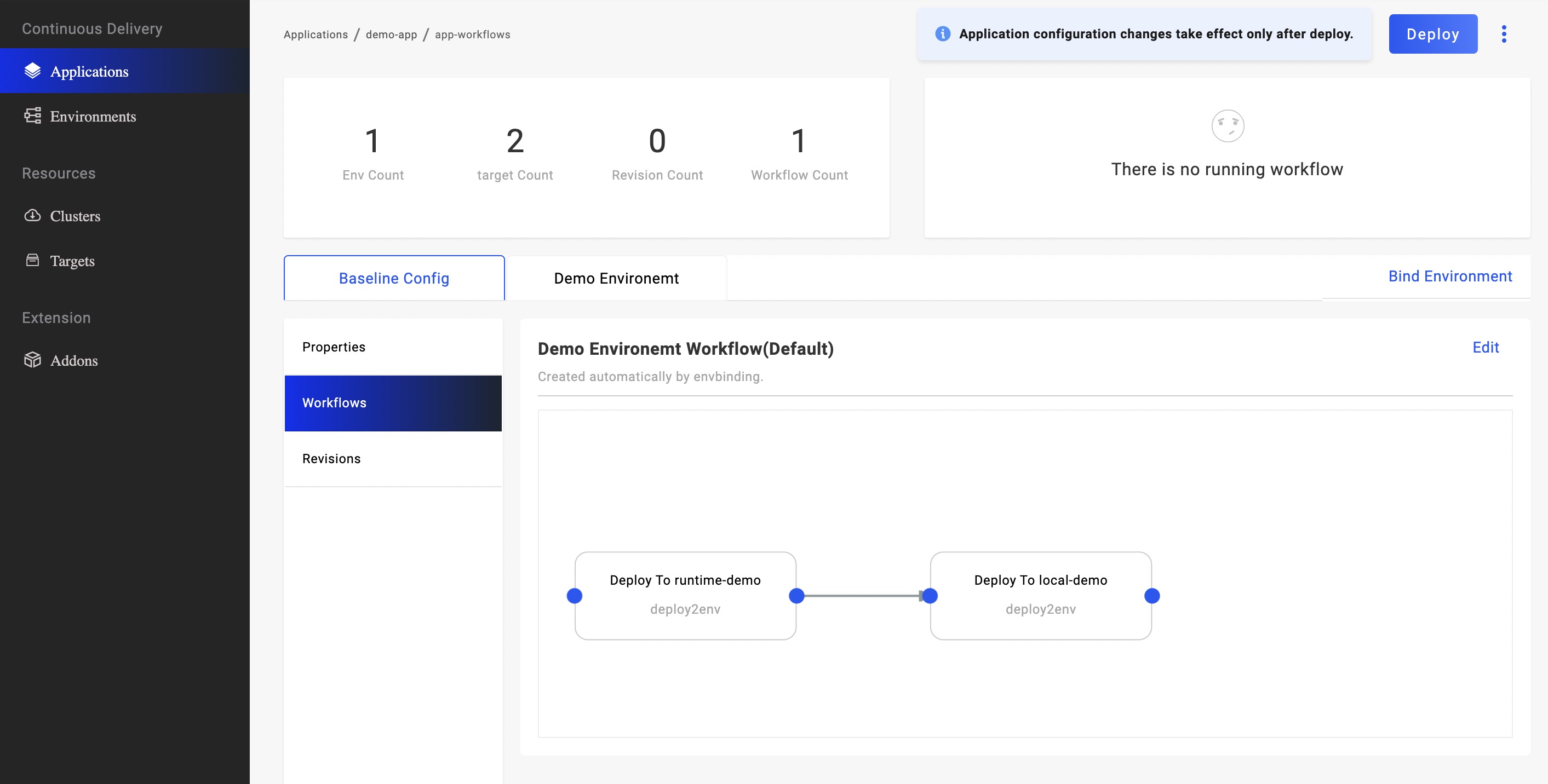
After you deployed this application, the component will be dispatch to both targets for specific namespace of clusters.